The Visualising War podcast recently interviewed photojournalist Hugh Kinsella Cunningham about his experiences of capturing conflict on camera in the Democratic Republic of Congo.
Based in the DRC for just over two years, Hugh has been documenting a range of humanitarian crises, from the impacts of Ebola to the mass displacements that have occurred as a result of the Ituri conflict in the northeast of the country. One thing that he tries to convey in his photography is the scale and complexity of these interconnected crises. As he explains, there are over 120 armed groups in the East of Congo; and Ituri province has seen over 1.6 million people displaced by fighting, with crimes against humanity being documented by the UN. In his own words, ‘Over 60 displacement camps dot the land, an entire community on the move, persecuted and frail. Stranded in these isolated safe havens, there is no end to the crisis in sight…’. His aim is to represent these crises in ways that make people stop, think, question and care. He wants the images he produces to raise awareness, engage people and inspire them to lobby for change.
Hugh talked about the some of the challenges of conflict photography and how it has changed in recent decades. During the Gulf War, debate raged over so-called ‘embedded journalists’: reporters accompanying (and often protected by) military forces, whose ‘unprecedented access’ to the front line was inevitably limited by what commanders wanted to direct attention to… or away from. As armed groups, state military and government bodies have become ever more digitally aware, they have exercised increasing control over what journalists see and what photographers can capture on camera. As Hugh explained, it is now rare for photojournalists to get access to front lines in the kinds of conflict that he covers; more often, journalists end up tracking the aftermath or wider ripples of increasingly invisible wars. Other factors exacerbate this trend. Conflict photography is an expensive business: journalists need security, HEFAT training, transport and other logistical support, but few media organisations are willing to fund this. Photojournalists like Hugh rely on grants from organisations like the Pulitzer Center and work for aid organisations to cover the costs of assignments. And yet as conflicts become less visible and access to them more closely managed by the powers that be, it is more important than ever that photojournalists are able to spend time on location, not just gathering memorable snapshots for media organisations to run on their front pages but documenting the wider complexities and impacts of conflict.
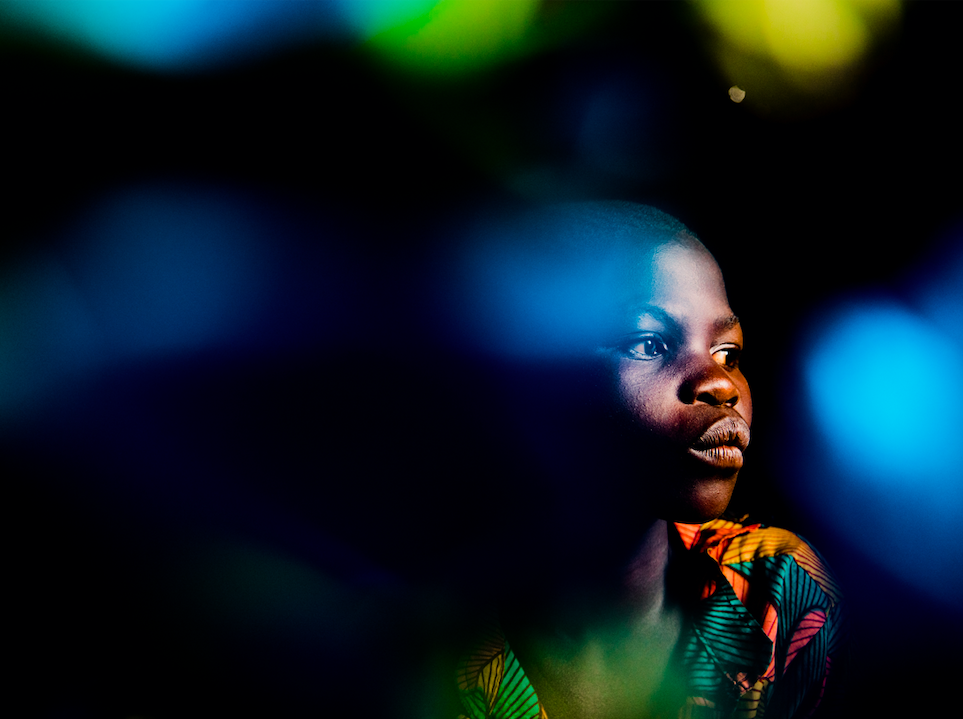
Hugh talked about some of the trends in conflict photography that he consciously tries to avoid, in particular the production of horrifying images, which can retraumatise victims as well as switching viewers off. This echoes what another of our podcast guests, artist Diana Forster, said about drawing viewers in rather than repelling them with brutal pictures. Hugh recently teamed up with charity Save the Children to produce a series of portraits of children impacted by conflict in the DRC. Rather than parading children with terrible wounds or foregrounding victims of sexual abuse, as some journalists do, Hugh did not seek out particularly traumatic stories; he choose to capture a wide range of experiences (for example, a boy who briefly lost his mother in the chaos of an evacuation), and to represent his subjects not as victims but as children at rest or in contemplation, framed simply by their landscape. Using natural objects like flowers and leaves, he flooded the photographs with light and colour, infusing love, hope and a sense of protection. The patches of colour both draw viewers in and keep us at a discrete distance, preventing full exposure. They soften our approach to the children pictured as well as making us stop and wonder about their stories. This is both a sensitive and striking way of visualising conflict.
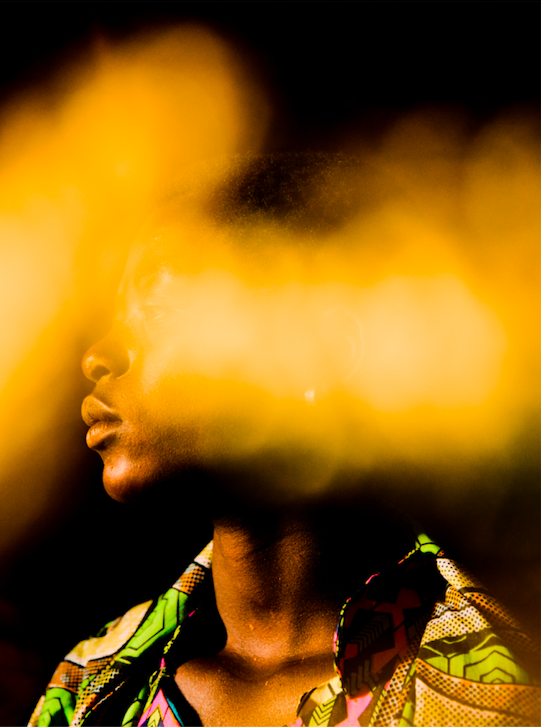
Hugh sometimes captures more military images, but here too he strives for sensitivity as well as creativity. Again, the Congolese landscape comes into play, not just framing an individual soldier but giving viewers an atmospheric framework that helps us contextualise whatever military activity is being represented. Lush jungle, impressive cloud formations and serene mountain landscapes often contrast with the human activity in the picture, and the dialogue between landscape and human prompts us to look closer at individuals and consider their personal lives, struggles and motivations.
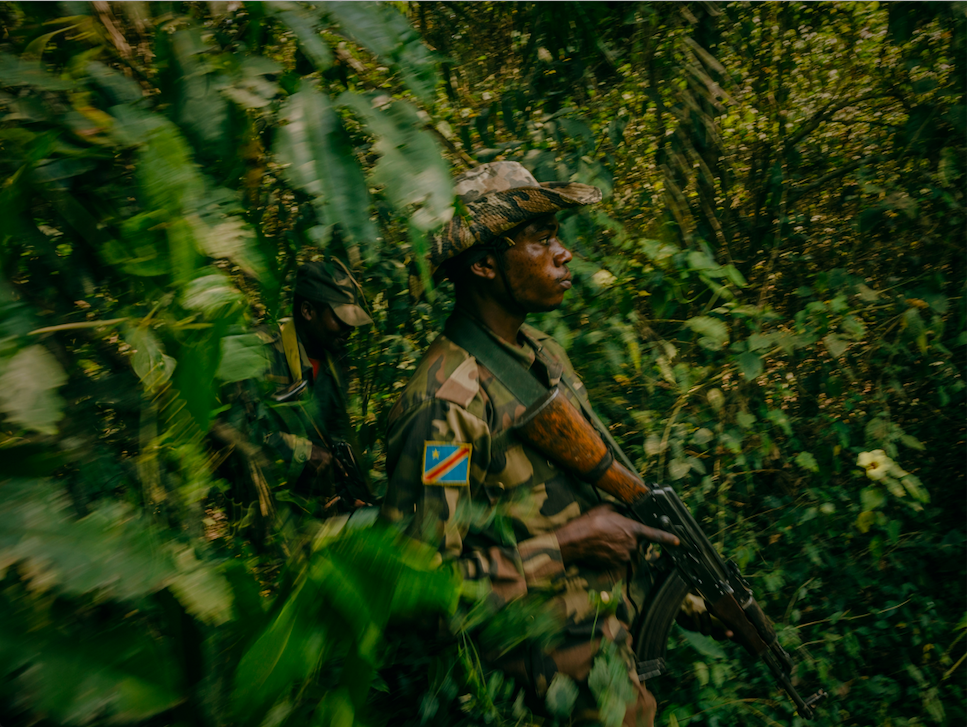
Sometimes creativity comes from necessity. On patrol with an armed unit at night, Hugh became frustrated by how little he could see or capture on camera: so he decided to make a virtue of it. His series of photographs shot through night vision goggles plays with genre and audience expectations, adopting a form of representation that we sometimes see on live news reporting of dynamic conflict situations or at dramatic moments in action films. We are drawn to the images in part because we recognise them as a ‘high stakes’ kind of narrative, but also because we can’t quite work out what they show. We have to peer hard to see what is going on, and in that way Hugh captures the fact that so much of this conflict is invisible; it is hard to penetrate through the darkness, and what we see tends to be only a blurred fraction of what is going on. Necessity breeds creativity, and that in turn leads to impact.
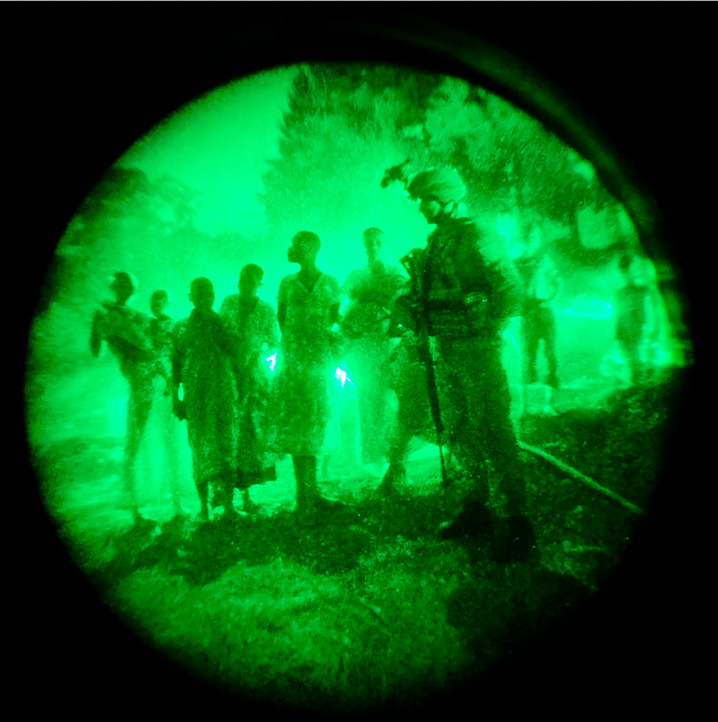
As we discussed on the podcast, Hugh’s work reminds us that there is no clear separation between art, society and politics: they impact each other. This is particularly clear in his coverage of the impacts of Ebola in communities already suffering through conflict. Here too, Hugh was interested in making the invisible more visible. Adding stained darkroom handprints to the photographs he took of health care workers and their military escorts, he wanted to capture the unseen transmission, traumas and mental health effects of the Ebola virus and the complexities of the dealing with a devastating epidemic in the context of ongoing violence and war. While some conflict photography focuses on armoured vehicles, ruined buildings and victims of violence, Hugh’s work paints a much broader picture, capturing the many ways in which war and other societal struggles and experiences overlap.
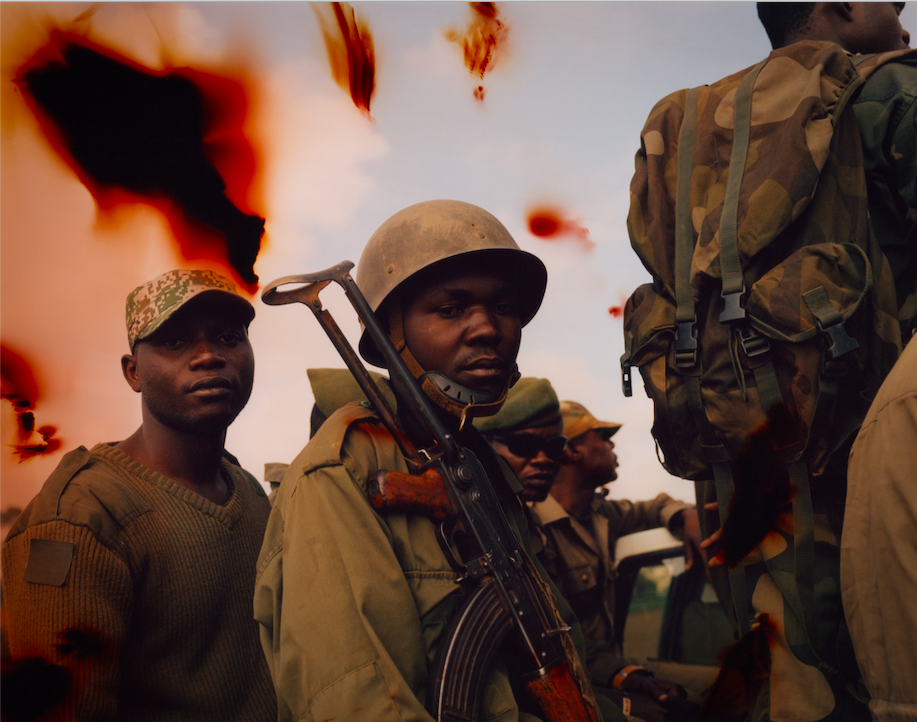
We learnt so much about habits of visualising war and the impact which creative and sensitive representations of conflict can have during our discussion with Hugh. You can see more of his powerful photography on his Instagram page and website. And if you want to find out more about his work, tune in to our podcast!
Alice König 28.4.21
